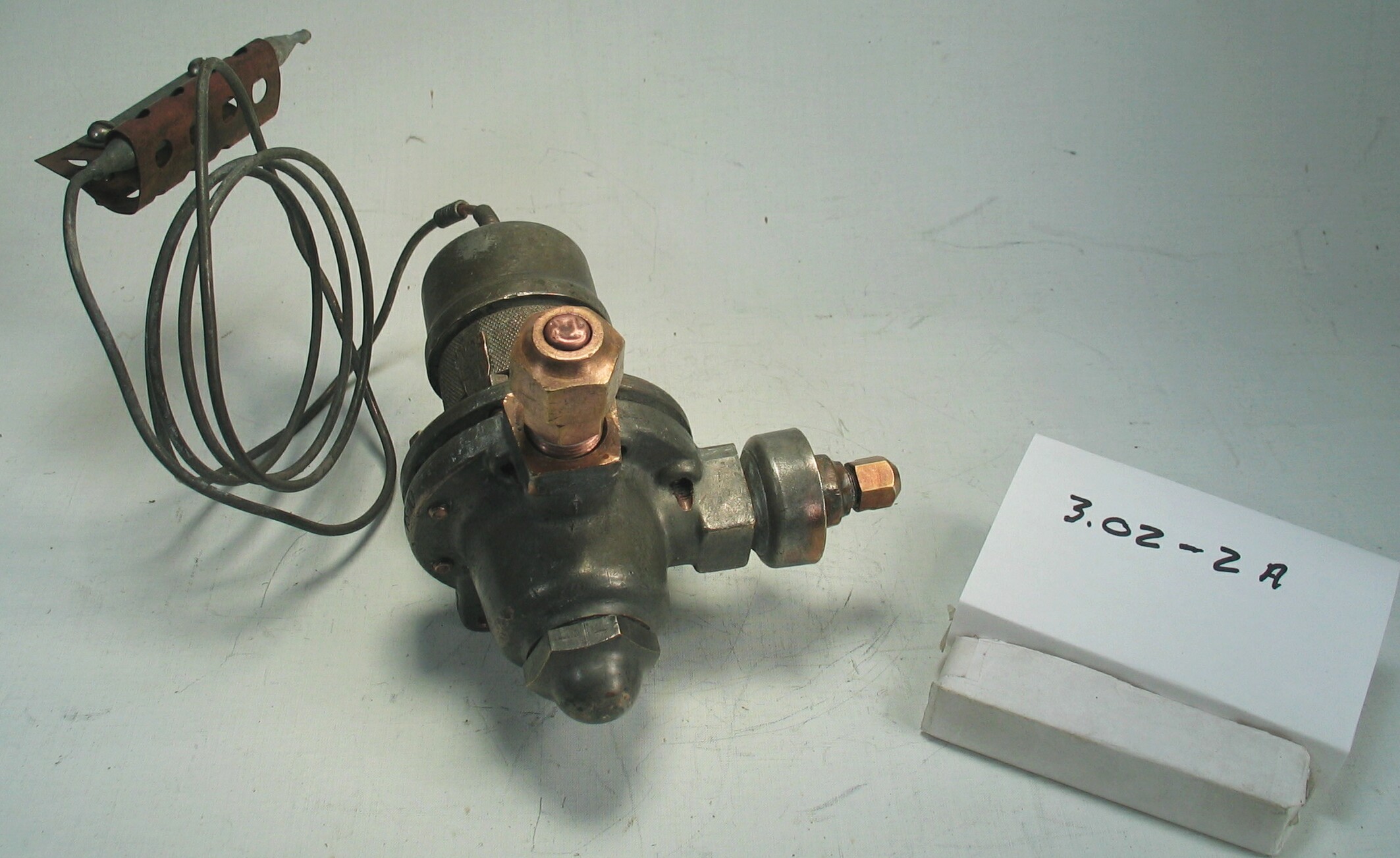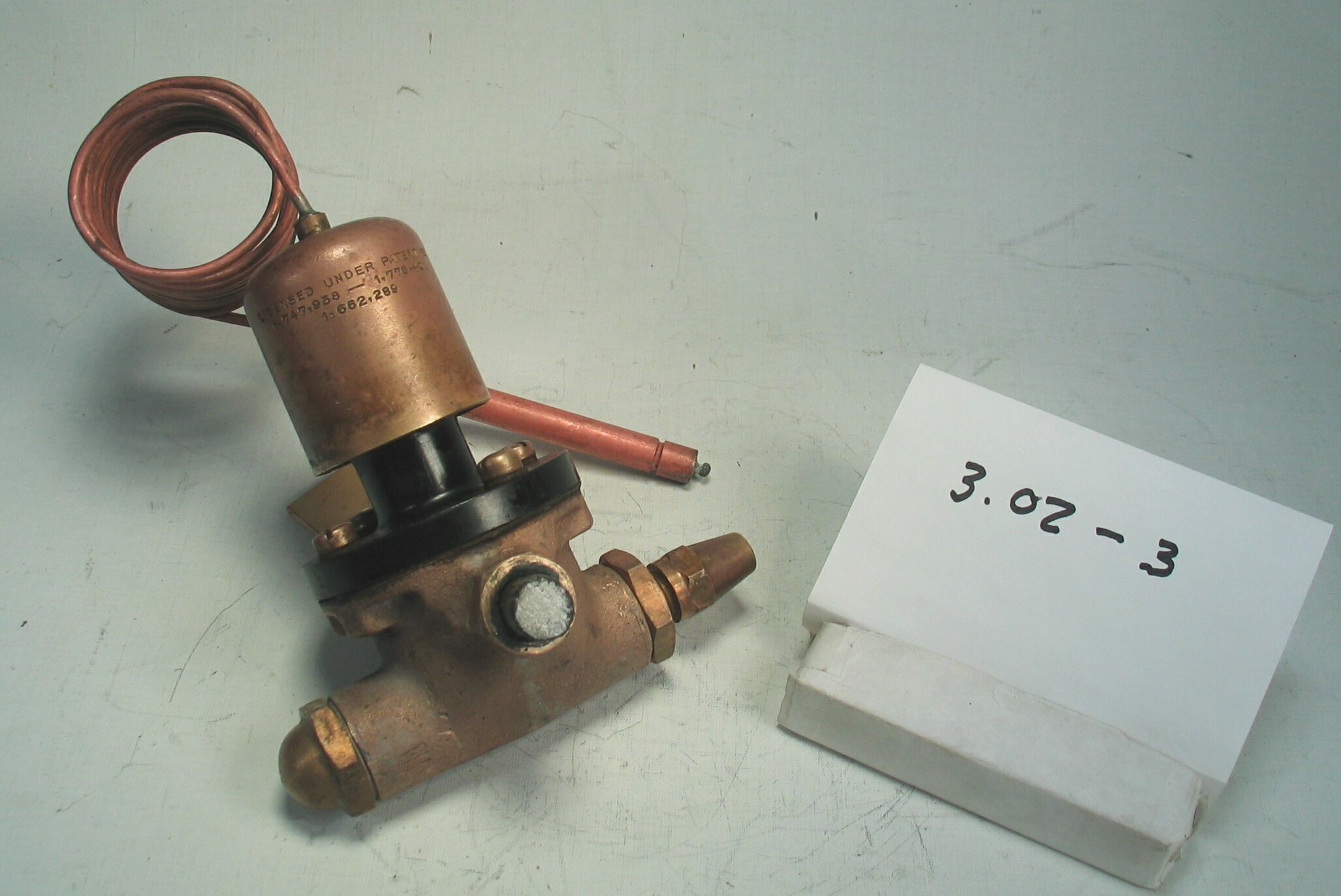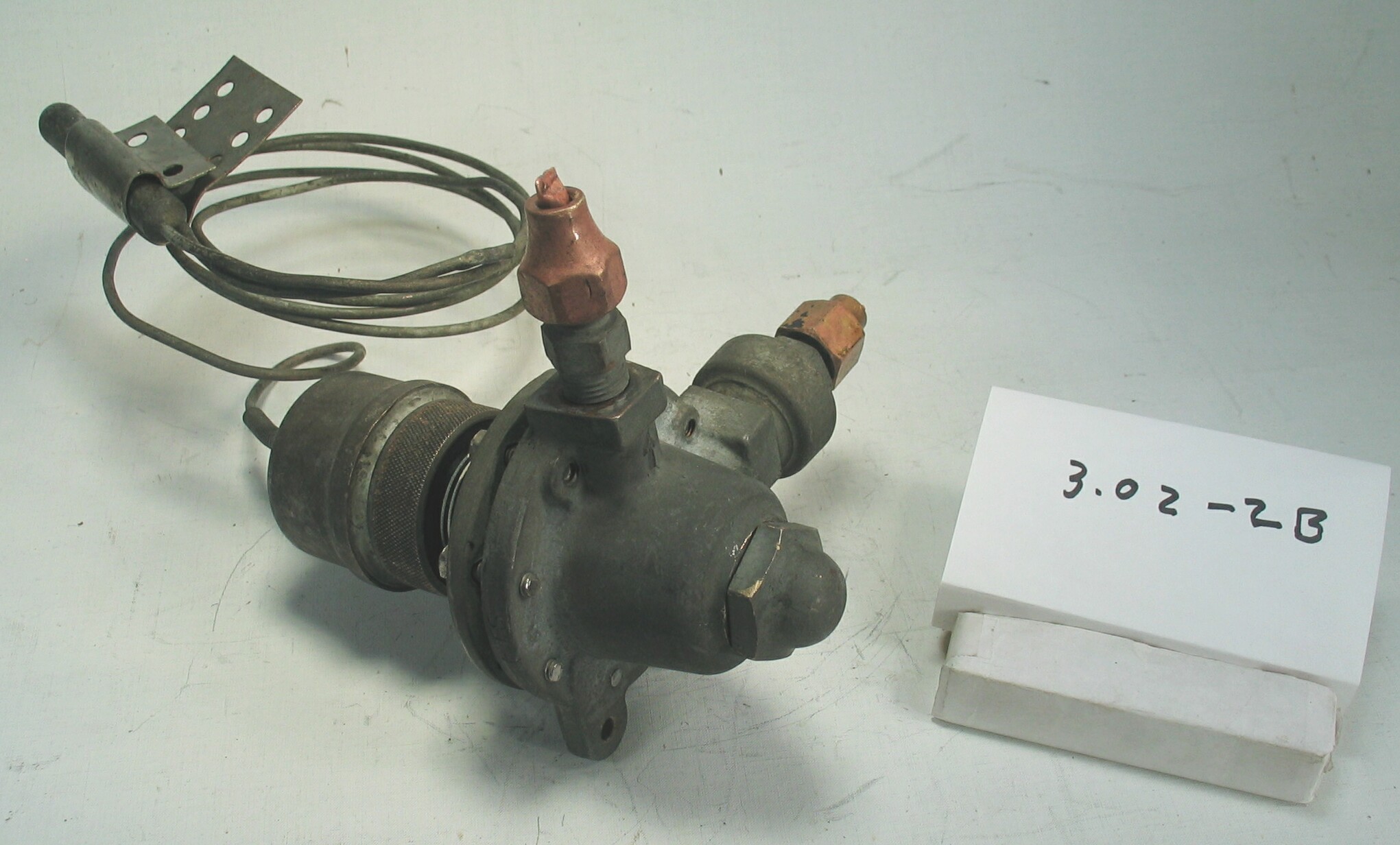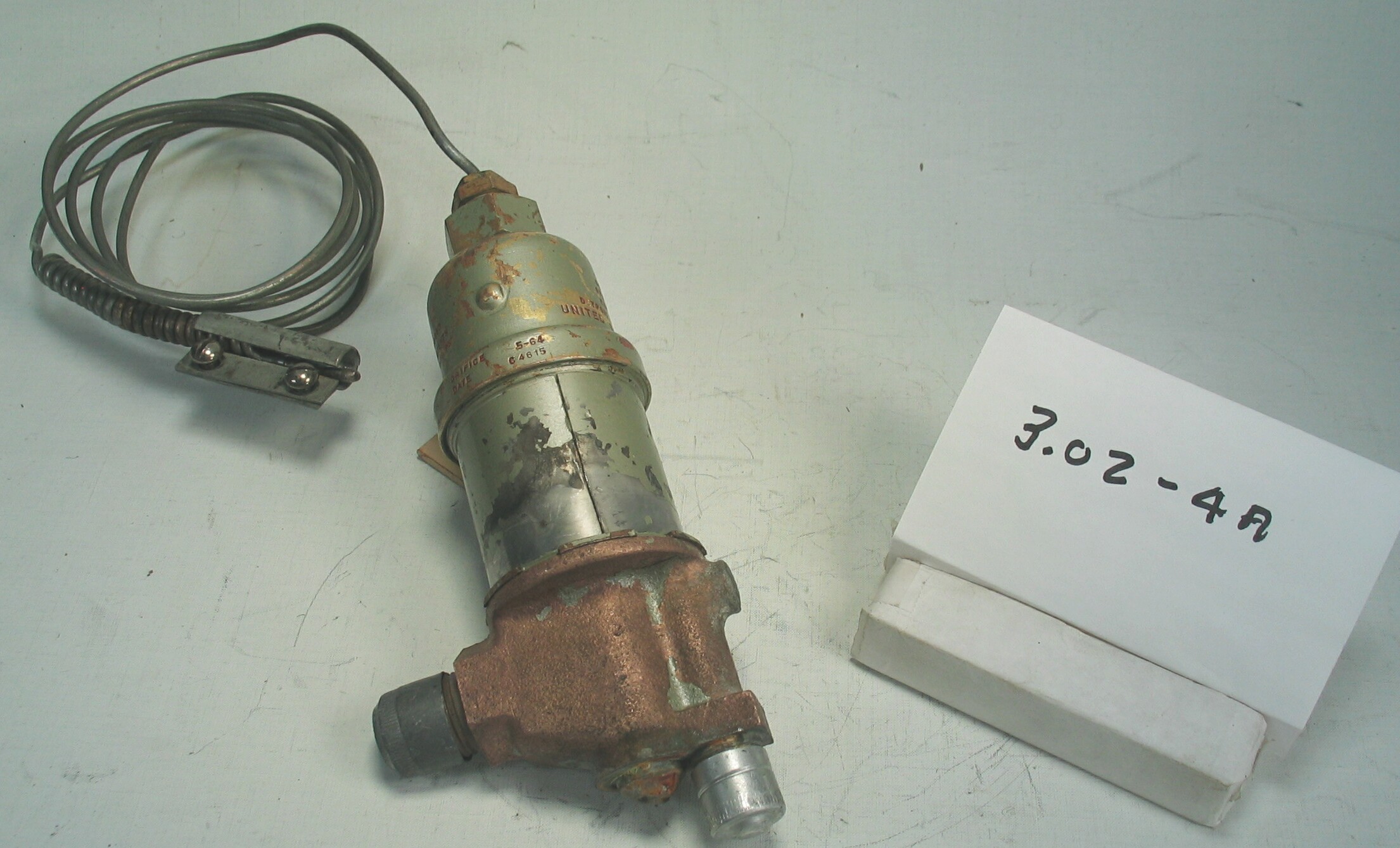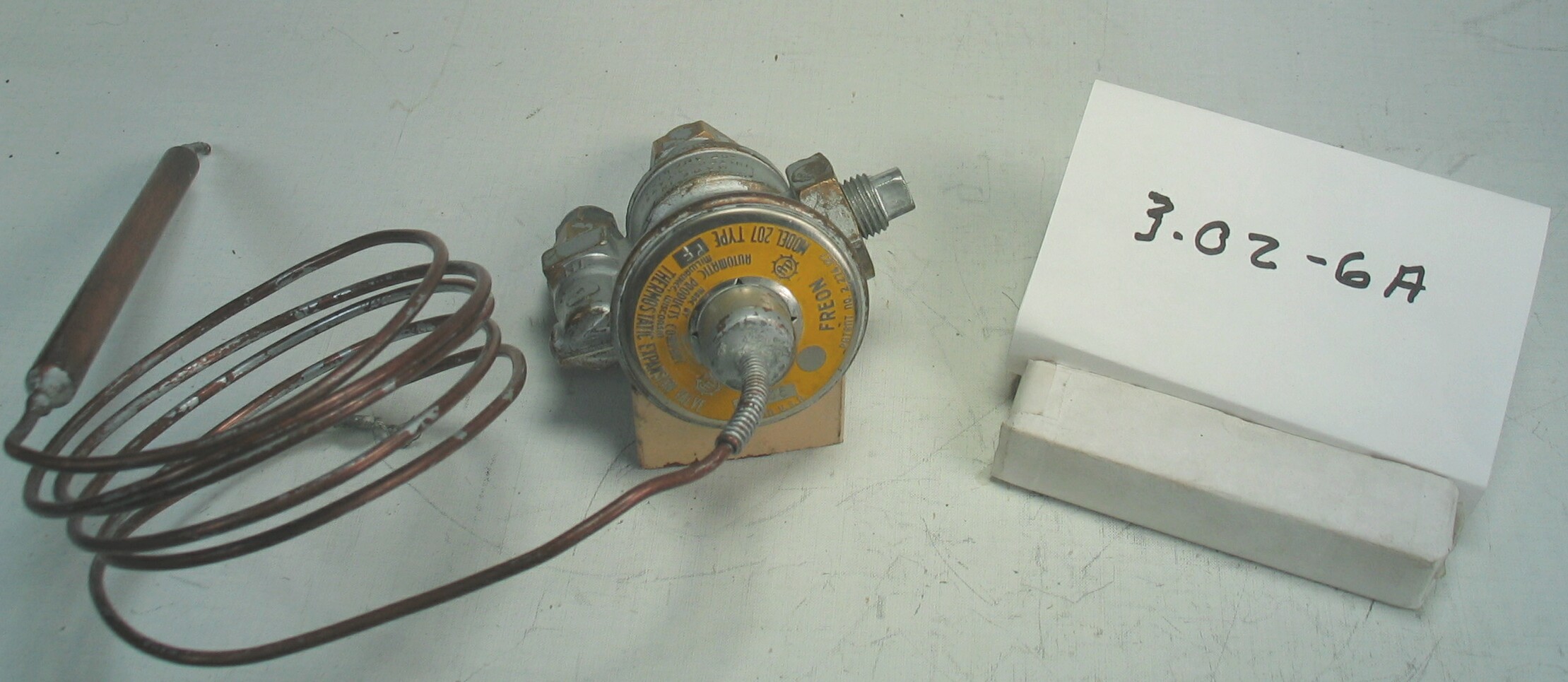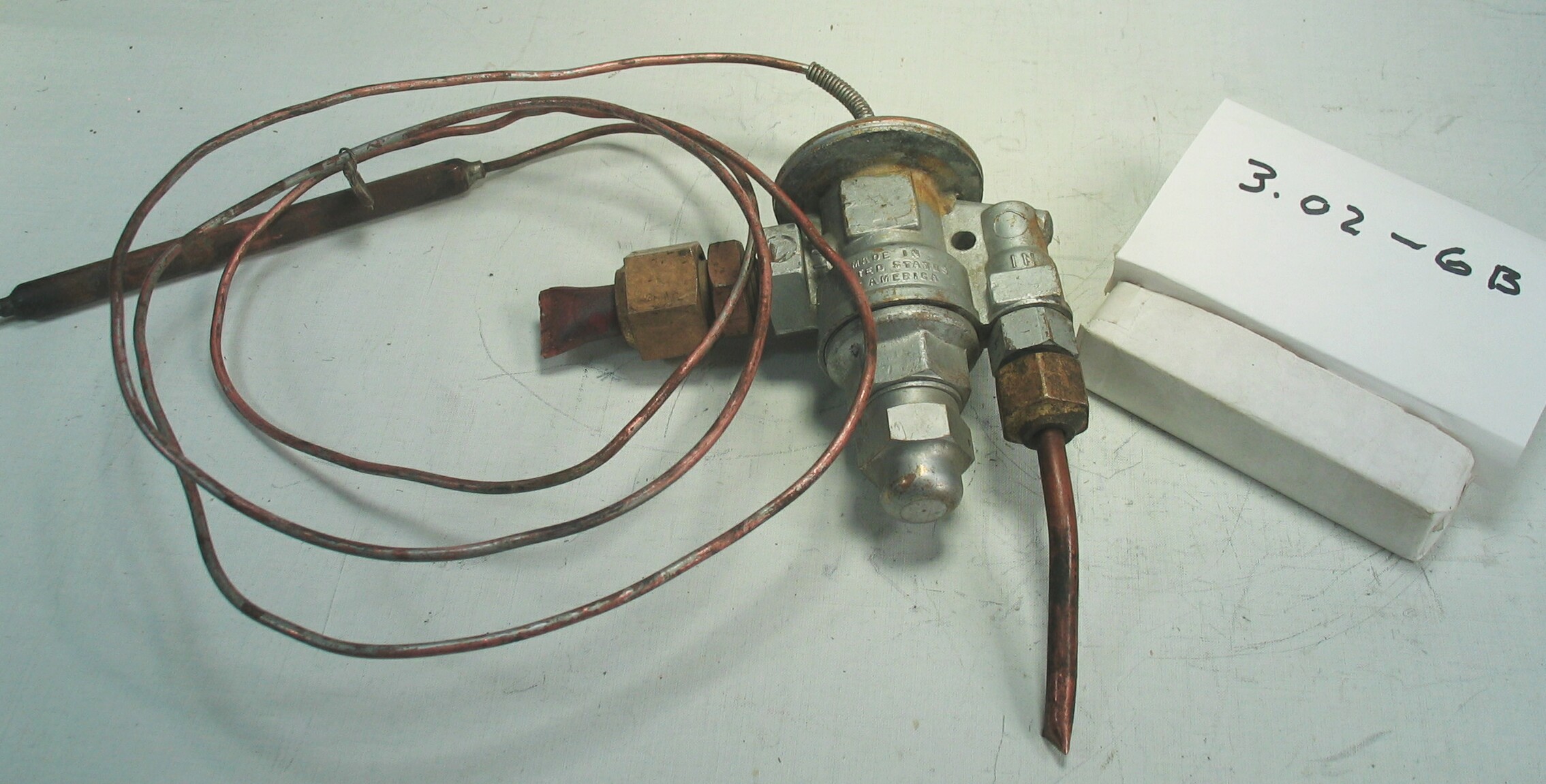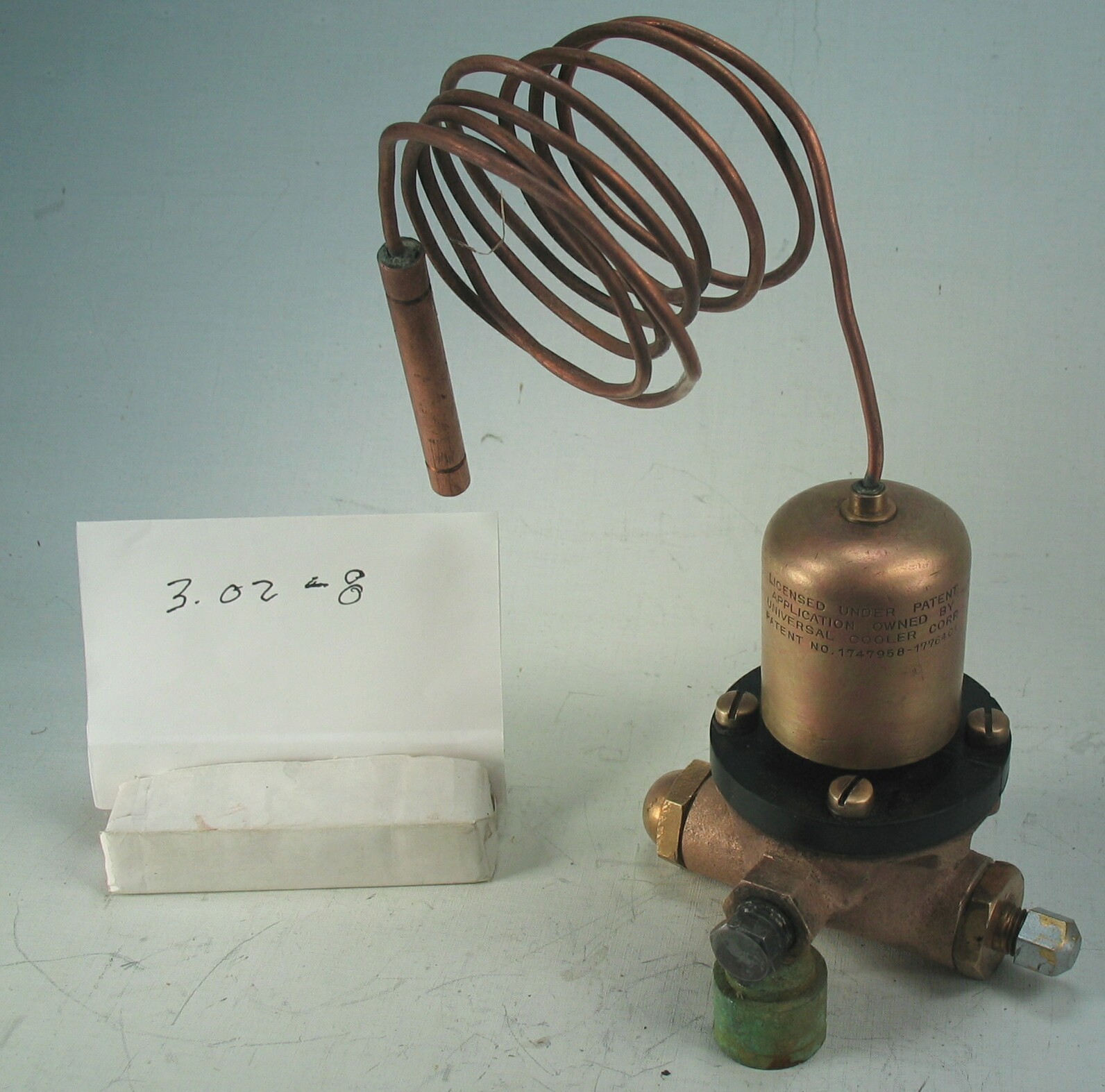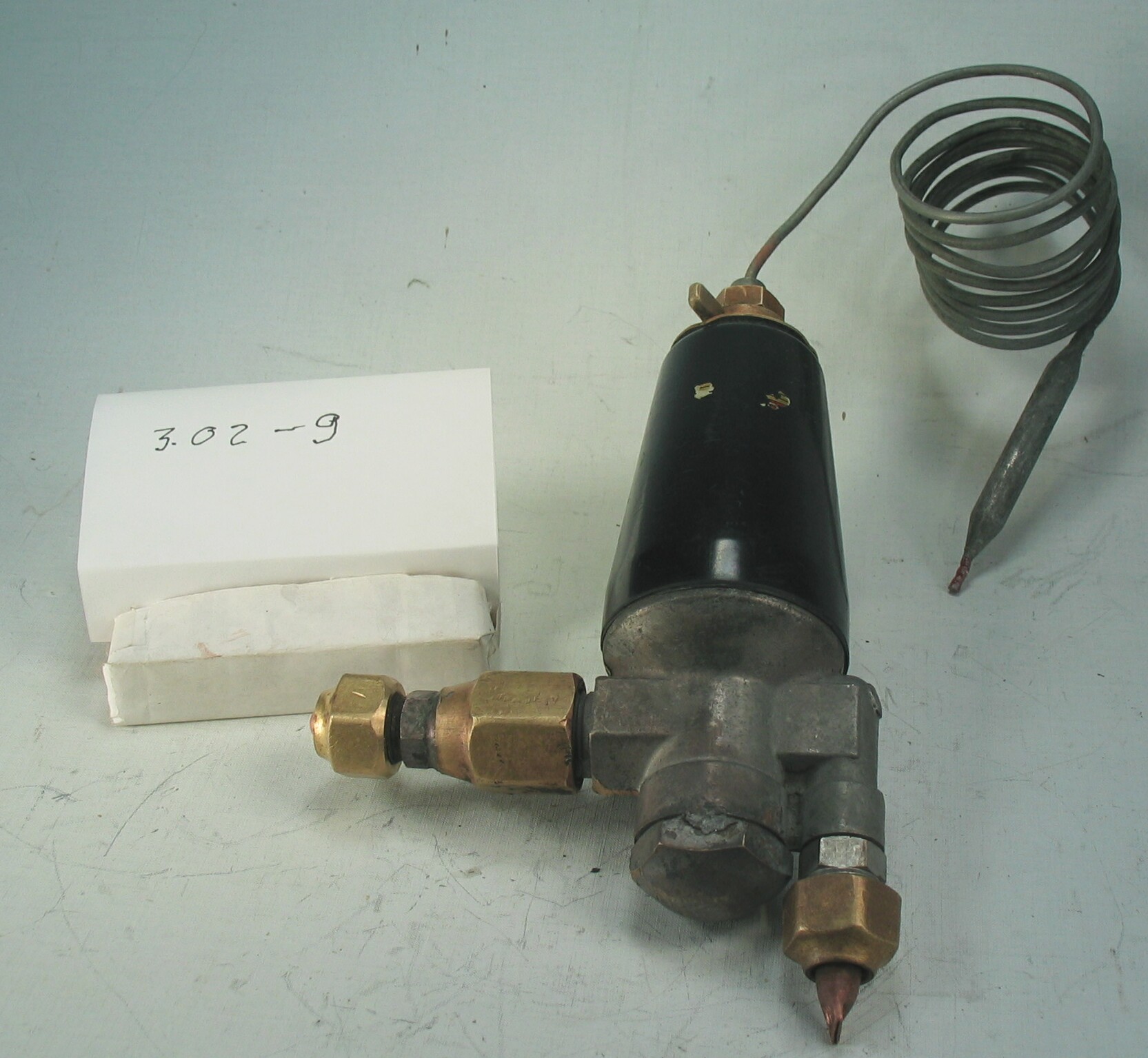3.02-4B: Detroit Lubricator 1946 Thermostatic Expansion Valve
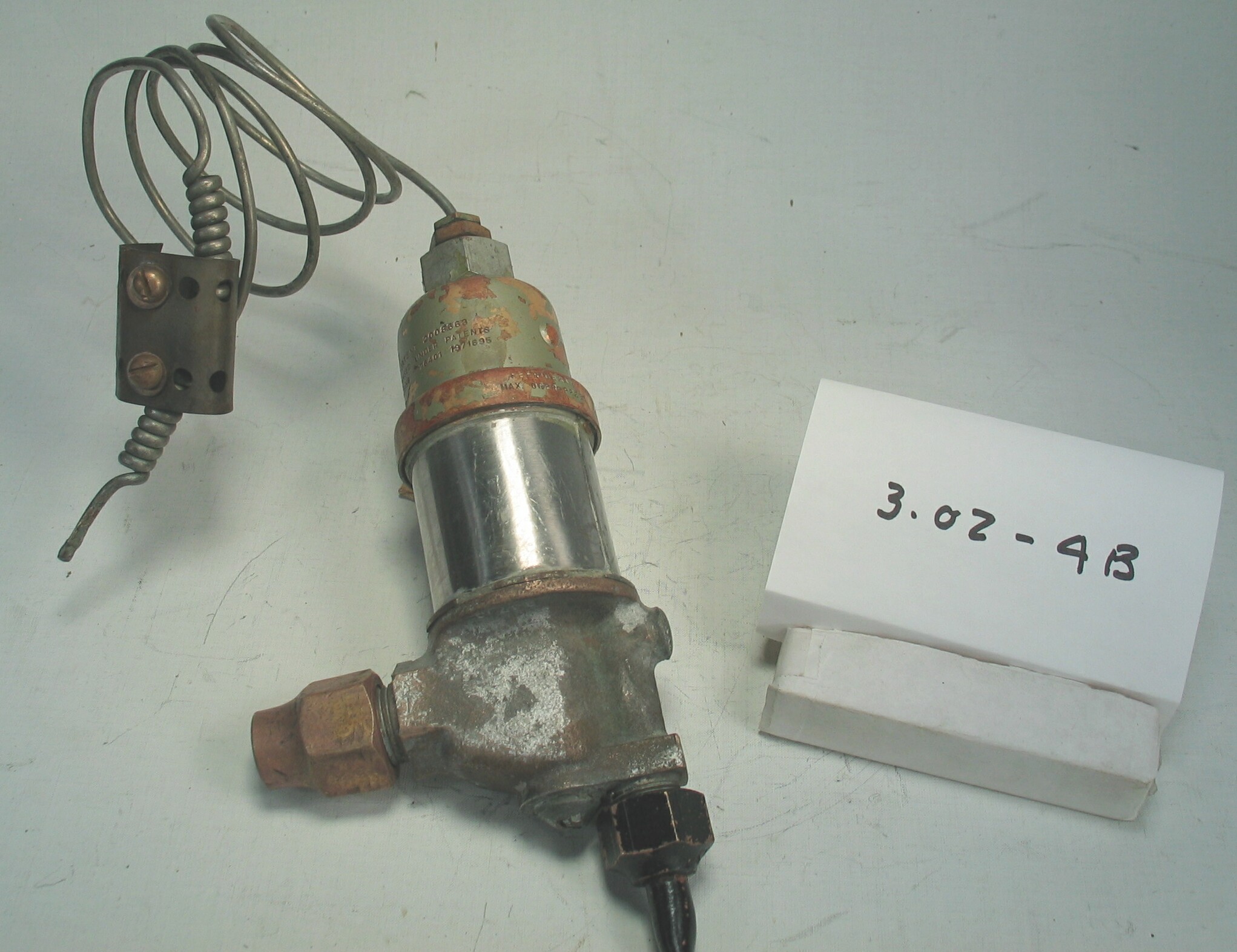
| HHCC Accession No. 2006.064 | HHCC Classification Code: 3.02-4B |
|---|
Description:
A mid 20th century, thermostatic expansion valve, a work horse of the Canadian refrigeration industry through much of the latter part of the century, double bellows construction with wide range superheat adjustment, widely used by original refrigeration equipment manufacturer and for replacement work; made in a wide range of capacities for methyl chloride, Freon 12 and 22, power element and 5 ft. capillary tube, Model 673- M, Detroit Lubricator, circa 1946. [1 of a set of 2, seeID# 187]
Group:
3.02 Refrigerant Flow Controls - Commercial
Make:
Detroit Lubricator
Manufacturer:
Detroit Lubricator Co., Detroit
Model:
673- M
Serial No.:
Size:
3x 3 x 7 in. h
Weight:
3 lbs
Circa:
1946
Rating:
Exhibit, education, and research quality, illustrating the engineering design, construction, and operating principles, of a popular thermostatic expansion valve, commonly found on commercial refrigeration equipment throughout much of the middle and later years of the 20th
Patent Date/Number:
2008663 [1935]; also licence under patents 1747953; 1776401; 1971696 [1930 ‘ 1934]
Provenance:
From York County (York Region) Ontario, once a rich agricultural hinterlands, attracting early settlement in the last years of the 18th century. Located on the north slopes of the Oak Ridges Moraine, within 20 miles of Toronto, the County would also attract early ex-urban development, to be come a wealthy market place for the emerging household and consumer technologies of the early and mid 20th century.
With original shop repair tag in Howard Oliver’s hand writing ‘slight leak at valve seat’
This artifact was discovered in the 1950’s in the used stock of T. H. Oliver, Refrigeration and Electric Sales and Service, Aurora, Ontario, an early worker in the field of agricultural, industrial and consumer technology.
Type and Design:
Double bellows construction Wide range superheat adjustment, Interchangeable orifices: 5/64 to 5/32 inch
Construction:
Heavy cast brass body with aluminium overcoat Spiral formed superheat bulb
Material:
Special Features:
Original superheat bulb clamp
Accessories:
Capacities:
Equiped with 5/64th inch orifice this valve is rated at 1 ton refrigeration capacity on methyl chloride and 1,2 tons on Freon 12 refigerant
Performance Characteristics:
Operation:
Control and Regulation:
Targeted Market Segment:
Consumer Acceptance:
Merchandising:
Market Price:
Technological Significance:
This artifact of history, a workhorse of its times in the refrigeration, thermostatic expansion valve field tells the many stories of the explosion of commercial refrigeration applications and their wide adoption in Canada throughout the middle and later years of the the 20th century. Much of the success of this technology was due to the wide range of capacities and applications built into the design by Detroit Lubricator Aware of the exploding market in commercial refrigeration applications, as well as the increasing diversity in system designs and engineering design requirements, the manufacturer built the valve around a basic platform that could be readily adapted with changes in orifice size and inlet and outlet connections to suit a wide range of refrigerants [methyl chloride, Freon 12, and Freon 22], temperature applications [low and commercial range] and refrigerating tonnage capacity ratings [1.2 to 4 tons]. It was a success story that led the industry. The valve would be the darling of refrigeration wholesalers and original equipment manufacturers, because of the range of applications accommodated [see wholesalers catalogue]
Industrial Significance:
Socio-economic Significance:
The socio-cultural significance of the impact of the unobtrusive, thermostatic expansion valve on life in Canada, throughout the latter part of the 20th century, would be hard to over-estimate. It would become the quintessential, automated refrigerant flow regulating device for most medium and larger commercial refrigeration applications, found in confectioneries, food stores and ware houses. It would help to make possible the wide array of foods and confectionery products Canadians would come to enjoy, as part of the late 20th century Canadian life experience.
Socio-cultural Significance:
Donor:
G. Leslie Oliver, The T. H. Oliver HVACR Collection
HHCC Storage Location:
Tracking:
Bibliographic References:
Marshall Refrigeration Co, Refrigeration catalogue, Toronto, undated, p. 62 R and E Thermal Ltd., Refrigeration and Air Conditioning Supplies Catalogue No. 63, 1957
